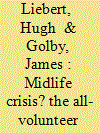|
|
|
Sort Order |
|
|
|
Items / Page
|
|
|
|
|
|
|
| Srl | Item |
| 1 |
ID:
157492


|
|
|
|
|
| Summary/Abstract |
Do military endorsements influence Americans’ political and foreign policy views? We find that senior military officers have the ability to nudge public attitudes under certain conditions. Through a series of large, survey-based experiments, with nearly 12,000 completed interviews from national samples, we find that participants respond to survey questions in predictable ways depending on whether they have been prompted with information about the views of senior military leaders on the very same questions. When told that senior military leaders oppose particular interventions abroad, public opposition to that intervention increases; endorsements of support boost public support but by a smaller magnitude. Subsequent causal mediation analysis suggests that military opinion influences public opinion primarily through its impact on a mission’s perceived legitimacy and, to a lesser degree, it’s perceived likelihood of success.
|
|
|
|
|
|
|
|
|
|
|
|
|
|
|
|
| 2 |
ID:
151017


|
|
|
|
|
| Summary/Abstract |
Owing to regional and partisan imbalances, the U.S. military is at greater risk than at any time since the advent of the all-volunteer force of becoming estranged from significant portions of the society it serves. What—if anything—should be done? This article takes three initial steps to address this problem. First, the article examines regional and partisan representation in the U.S. military and suggests that existing imbalances are likely to grow worse over time. The article then argues that the most obvious policy response, a renewed draft, would in fact fail to adequately bridge the gap. Finally, the article outlines one policy response—the reassertion of nonpartisan norms—that would help to mitigate, though not close, the gap.
|
|
|
|
|
|
|
|
|
|
|
|
|
|
|
|
| 3 |
ID:
161763


|
|
|
|
|
| Summary/Abstract |
This article contends that “best military advice” is a problematic construct for both the military and civilians alike. Yet, the increasing resonance of this construct across the Joint Force cannot—and should not—be summarily dismissed. Instead, it merits reflection about why the term has grown in popularity, how its continued use is influencing the development of defense strategy, and perhaps above all, how it will affect American civil-military relations. As best military advice infuses the U.S. military, it will increasingly become normalized and held up as desirable, particularly among the younger generation. Short of serious near-term steps to neutralize this construct, its deleterious influence will only increase.
|
|
|
|
|
|
|
|
|
|
|
|
|
|
|
|
|
|
|
|
|